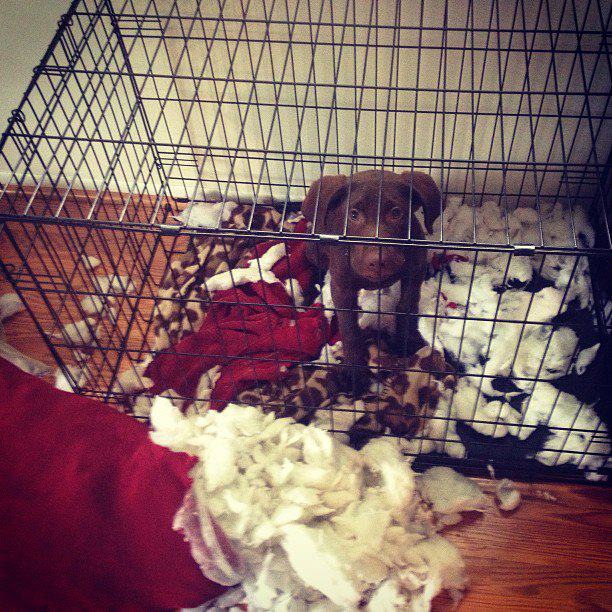Home alone: Signs of separation anxiety in your dog

Does your dog resort to annoying or even destructive behaviors when you leave the house? If so, it may have a condition known as separation anxiety, meaning that your dog gets extremely nervous when you are away and often finds an inappropriate outlet for that anxiety. Look out for these signs:
Barking or whining. This vocal sign begins soon before or after departure and persists for a large percentage of the time your dog is alone. Your neighbors will definitely let you know if this behavior is occurring.
Inappropriate elimination. Your dog deposits its urine, stools or both in various locations around your home, as opposed to in a single, consistent location. This behavior only occurs when you dog is alone or perceives that it is alone.
Destructive behavior. This behavior is characterized by damage to exit points from your home such as doors and windows or destruction of personal items such as pillows, clothing and remote control units. Confining your dog to a cage often escalates the destruction and can result in your dog injuring itself (e.g. its teeth or toenails).
Excessive salivation. This behavior is often considered to be highly suggestive of separation anxiety when the behavior is restricted to those times when your dog is alone or perceives that it is alone.
How do you know when your dog is exhibiting these signs? After all, they happen when you’re not home. Well there is circumstantial evidence of signs of destruction, elimination or drooling. But even better is video evidence. A picture may be worth a thousand words, but a video is worth a million, at least to a veterinary behaviorist. Use your tablet, your phone or your laptop to get video, or use an online service such as Dropcam or Facetime. If your dog is exhibiting any of these behaviors when you are away, schedule a visit with your veterinarian. He or she can help you curb or completely eliminate your dog’s anxiety with behavior exercises, often in conjunction with antianxiety medications.
Information provided by John Ciribassi, DVM, DACVB, Chicagoland Veterinary Behavior Consultants, Carol Stream, Illinois
Did you know?
- We offer daycare for pets who don’t like to be left alone.
- Our pet resort is the perfect place to keep your pet healthy and happy when they can’t be part of your travel plans.
- We offer pet behavior training. Our partnership with trained animal behaviorists can help determine the cause of such disorders as separation anxiety and obsessive behavior, and then develop a treatment regimen for the client.
- Behavior (12)
- Caring for your pet (266)
- cat (6)
- Community Events (19)
- dog (7)
- From Our Clients (15)
- Happy Tails (9)
- News (424)
- Press (53)
- Products (2)
- Questions (4)
- Recalls (1)
- Special Offers (5)
- Tips & Advice (231)
- Uncategorized (19)
- Veterinary Services (48)
